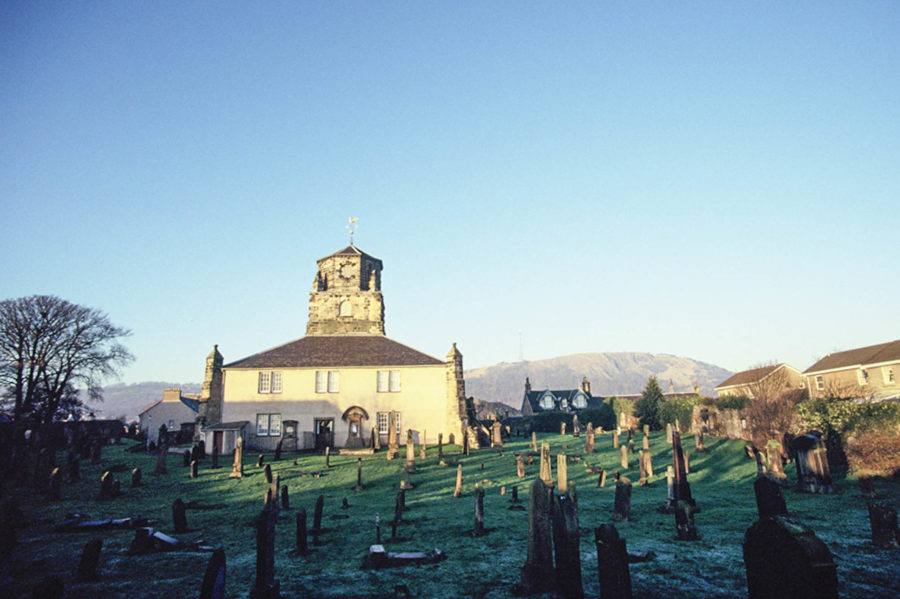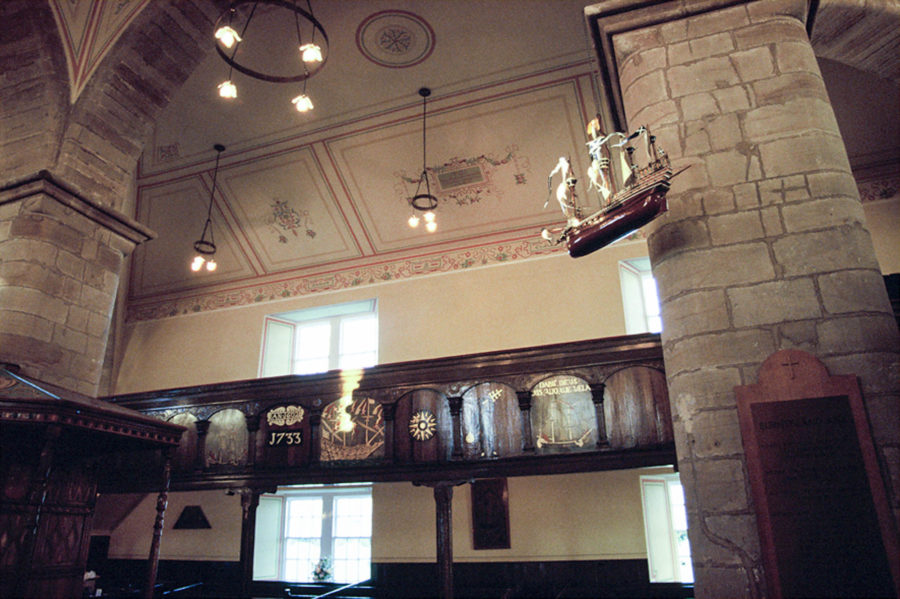The great upheaval of the Scottish Reformation was underpinned, intellectually, by the primacy of the Word over the image. The resultant iconoclasm destroyed countless religious buildings and works of art, and produced one built work of radical genius, the Church of St Columba, in the seafaring town of Burntisland, in Fife.
This status and focus is confirmed by the kirk being the location from where the creation of the Authorised Version of the Bible – the Word made accessible – was first proclaimed. But it is in the building’s radical architectural humanism that the democratic nature of the Word, in space, is revealed.
Gone are the caste-based heirarchies of a roman church, to be replaced by space for the demos: shared space, where even the creation of a separate balcony (as being useful for intimacy and iteration) has its humanising touch: a wee external stair allowed sailors to exit quietly during a service, to catch the rising tide. Such general, all-pervading and radical humanism is symbolised above the pulpit where, sweetly, beautifully, in place of veneration for the icon of a tortured man on a cross, the Word transports us – and the fully-rigged model boat is the Great Michael, in its time the greatest ship on earth, built across the Forth in Granton. The model was gifted to the church by its grateful sailors, saved by the townsfolk after the ship foundered.

Publication / Building Design
Part of the “My Favourite Building” series. A Roman Catholic friend was incensed at my passion for a reformation building and saw particular injury in my wearing, in the accompanying portrait, of the orange trousers. I have a passion for orange trousers too…
The beauty of this building is deliberate, considered and humane. But it is also unconscious: without thought for, or recourse to, conventional models of beauty, it is a sometimes awkward and gawky shell – as most of us have, and all the more beautiful for being called, by some, “ugly”.
Please, God, give us more of such ugliness, in our work. Today’s culture is one of relentless, debased icon-worship, a concentration on the imposition of form to the virtual extinction of humanistic-content: what does a building look like, “traditional” or “high-art wacky” (and we are often directed, by the most witless, to make it look both); never how does it feel, what will it be like to be, within this space? Thus the “watercolour urbanists”, led in Scotland by a startling alliance of Royal Prince, Nationalist First Minister and the man who designed the set of the Truman Show and surrounded by a new, nationalised urbanist industry far too focussed on making Scotland look like a Prince Charles painting; and thus the “gratuitous shapemakers” (with Jencks a particular influence in Scotland), allowed the occasional urbanist set-piece of celebrity ego-twiddle.
The buildings I love best from the past have neither twee nor twiddle and are sometimes plain, and sometimes plain ugly. Just as the Reformation’s concentration on the Word and consequent creation of “a School in every Parish” produced a comprehensive and secular-evolving education system that directly led to the Scottish Enlightenment, so the rich, humane rationalism of St Columba’s presaged the rationalist architectures of the Enlightenment and the best of modernism. All this has withered into faith-school sectarianism and scenic urbanism; but the great wave of regenerative rationalism will rise again…


